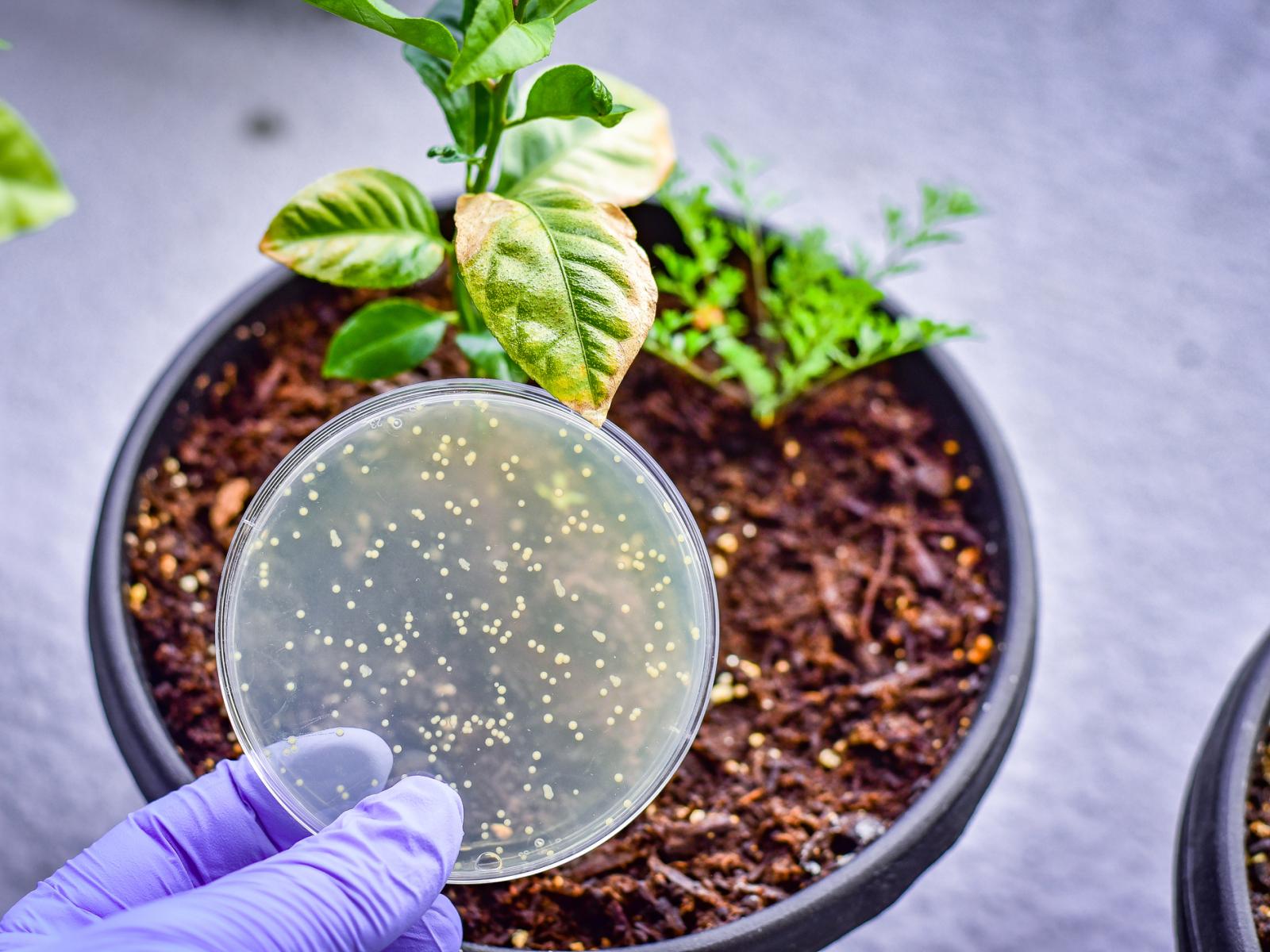Harnessing Microorganisms to Benefit the Environment
Working microbes in our soil

Photo by Manjurul | iStockphoto.com
Bacteria are some of the most common soil microbes. Researchers estimate that one gram of soil can contain up to several billion bacterial cells.
These bacteria, along with other microbes such as fungi, have many beneficial effects that include recycling carbon and nitrogen, improving plant growth, resisting plant disease, and restoring healthy soil ecosystems.
Scientists at Pacific Northwest National Laboratory (PNNL) have published a new article, titled “Soil-microbiome engineering for sustainability in a changing environment,” that focuses on understanding the composition, dynamics, and deployment of beneficial soil microbiomes to get the most out of soil. The PNNL authors are Janet Jansson, Ryan McClure, and Robert Egbert.
Providing for the people
The world’s human population is expected to grow to eight billion by 2025. To improve food production to meet the needs of a growing population, the PNNL authors believe that harnessing good soil microorganisms is absolutely necessary.
“Microbes in the soil carry out a number of important processes including providing nutrients and helping plants grow,” said McClure. “If we can harness and control these soil microbes, or add new ones to the soil to help, this could really increase our ability to grow plants for bioenergy or agriculture. We lay out several strategies in this review that have met with success in adding new microbes to soil or modifying those already there.”
Yet, anthropogenic, or manmade, environmental changes like pollution and climate change are making it harder for soil ecosystems to do their work.
Success with simplification
Most soil microorganisms have not been cultivated in the laboratory, making them difficult to identify and study.
One common approach is to use DNA sequencing to identify the composition of soil microbiomes, a soil microbial community. Other tactics include ribonucleic acid (RNA) sequencing and metaproteomics, which involve the study of proteins in microbiomes. Each approach has different strengths and weaknesses, showing that no method is best for analyzing the soil microbiome.
The ultimate goal is being able to grow the beneficial microorganisms in a way that will benefit environmental applications.
For this reason, microbial synthetic communities, also called SynComs, were developed and are derived from natural microbial communities.
Naturally evolved communities (NatComs) are another alternative approach that enriches microorganisms from within the soil environment, where the microbes have naturally evolved and interact with each other in the soil community. The primary advantage of this approach is that because the microbes are allowed to develop naturally, they are more likely to represent native interactions.
In some cases, as the authors of the review have done, SynComs can be isolated from NatComs. This allows for the advantages of working with a controlled and defined community, while also ensuring that microbes will interact with each other in relevant ways. This is the case with a new model community that the authors have researched, Model Soil Community – 2, or MSC-2. This is a community of eight microbes that interact similar to the soil community, opening up the possibility for soil microorganism studies that are much easier to carry out an interpret.
Biotechnology breakthroughs
Microorganisms in the soil can help reduce the release of greenhouse gases and can sequester carbon in soil. However, promising traits displayed by microbes in soil are often not active enough or do not persist long enough to have the expected environmental impacts. Gene editing tools can boost the expression of beneficial functions or control the environmental persistence of introduced microbes.
The responsible release of non-indigenous or engineered microbial communities to soil ecosystems are beginning to be addressed through new research programs seeking to understand how SynComs might alter the existing microbiome.
“The dual aims of optimizing functions and controlling environmental persistence in soil microbiomes are two sides of the same coin of genome engineering informed by multi-disciplinary research,” said Egbert, co-author and principal investigator for PNNL’s Persistence Control Science Focus Area project, a home for biocontainment research that supports the Department of Energy’s Secure Biosystems Design Program.
The PNNL authors believe more research is crucial to tapping the vast opportunities that include maintaining and improving crop performance and mitigating the negative consequences of climate change.
All examples of getting the soil to work for us.
Published: December 11, 2023
Jansson, J.K., McClure, R. & Egbert, R.G. Soil microbiome engineering for sustainability in a changing environment. Nat Biotechnol (2023). https://doi.org/10.1038/s41587-023-01932-3